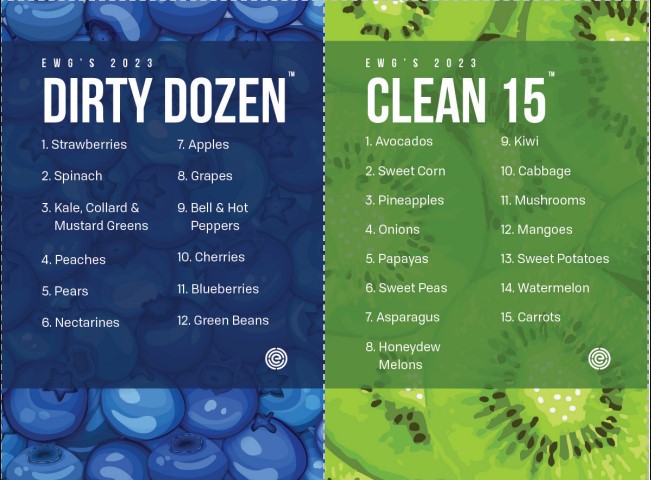Our choices can significantly impact our health and the environment in an ever-changing agricultural landscape where innovation meets sustainability. It is vital for operators working in agriculture or manufacturing to be aware of product quality and understand the nuances of pesticide use.
Today we will focus on an important topic – the Environmental Working Group’s Dirty Dozen and Clean Fifteen lists. These lists serve as a compass to help us make informed decisions about the fruit and vegetables we grow, sell or consume.
Join us in this study to understand why these lists are important and how they can influence our farming practices and consumer choices.

Dirty Dozen and Clean Fifteen meaning
The Environmental Working Group (EWG) publishes two lists each year, which rank products according to their pesticide residue content – the Dirty Dozen and the Clean Fifteen. The Dirty Dozen list includes crops with higher levels of pesticide additives and are therefore a priority for organic production.
In contrast, the Clean Fifteen list includes products with lower levels of pesticide residues, offering alternatives that do not necessarily require organic farming. Understanding these lists lets us make informed decisions about organic and conventionally grown products.
For example, the Dirty Dozen list includes strawberries, spinach, and apples, while the Clean Fifteen list often includes products such as avocados, corn, and pineapples.
Impact on consumer choice and agriculture
For consumers, these lists provide valuable recommendations on how to prioritize organic products while potentially saving money on other products. This information aligns with the growing trend and interest in organic food and its health and environmental benefits.
To learn more about the benefits of organic food, visit our Agriculture category. However, these lists are more relevant for businesses active in agriculture or manufacturing.
They indicate market requirements guided by production choices. Understanding consumer preferences can influence harvest planning, focusing on organic Dirty Dozen products, or researching innovative, sustainable farming practices to reduce pesticide residues.

Technical developments and trends in agriculture
A thorough technical understanding of pesticide use and residue management is essential for agricultural operators. The figures gradually shift towards Integrated Pest Management (IPM) techniques. IPM strategies can significantly reduce pesticide use, promoting healthier ecosystems and minimizing pesticide residues on crops.
In addition, the use of cutting-edge technologies such as AI-guided crop monitoring or drone-based precision spraying is increasing. These advances allow pesticides to be used targeted, reducing environmental impact while ensuring crop health.
Trends in sustainable approaches
Sustainable agriculture has become a buzzword and a fundamental shift in farming practices. In our agroapgade.lv community, adopting sustainable practices has been one of the critical issues, and this section explores how sustainable farming trends fit with the principles highlighted in the Dirty Dozen and Clean Fifteen lists.
Organic farming and soil health
Organic farming methods such as crop rotation, intercropping, and composting prioritize soil health and biodiversity conservation. These practices reduce dependence on synthetic pesticides and improve soil structure and fertility.
Agricultural operators increasingly recognize the long-term benefits of organic practices, which contribute to healthier ecosystems and improve crop resistance to pests and diseases.
Integrated pest management
Integrated pest management strategies are becoming increasingly popular among farmers looking for sustainable pest control methods. This approach combines practices such as crop rotation and targeted pesticide application only when necessary. Farmers can significantly reduce pesticide use, minimize pesticide residues, and preserve yields by monitoring pest behavior and using natural predators.
Consumer demand and environmentally friendly choices
Consumer awareness and demand for sustainably produced food continues to grow. Aligning consumer values with sustainable farming practices, particularly in reducing pesticide use, offers opportunities for agribusinesses.
Meeting this demand by prioritizing sustainable practices is not only ethically sound but also improves competitiveness in the market.
Conclusion
In the dynamic agricultural environment, the Dirty Dozen and Clean Fifteen lists serve as compasses to help consumers and businesses make informed decisions. Understanding the importance of these lists influences consumer choices and farming practices.
As entrepreneurs, we can move our industry towards a healthier and greener future by integrating sustainable practices, using technology, and prioritizing consumer preferences. Let’s continue on this agricultural journey together, making intelligent choices that benefit our businesses and the world.
For more interesting posts in our blog check out:

